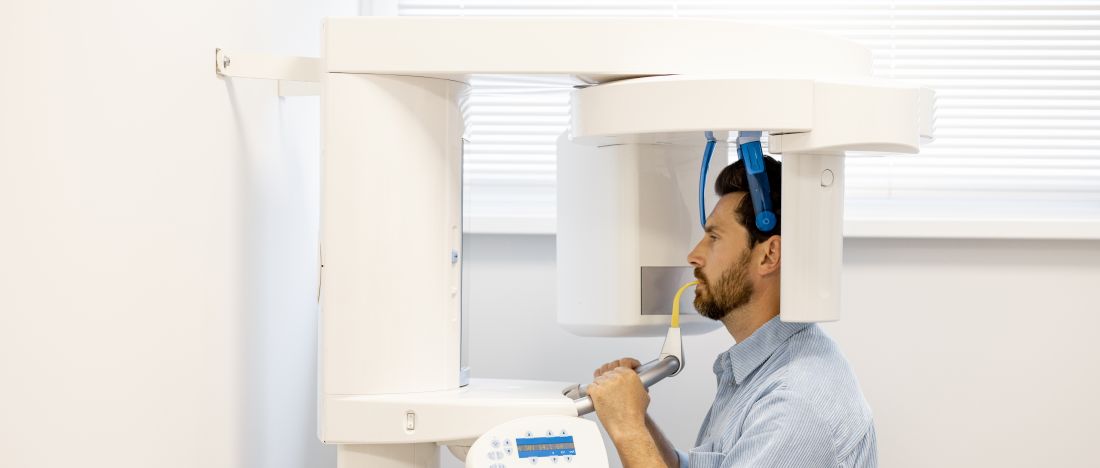About this course
Cone Beam Computed Tomography (CBCT) is reshaping how endodontic cases are diagnosed and treated, offering unprecedented detail and accuracy.
In this course, you'll discover how CBCT provides clearer insights into complex root canal anatomy and enhances treatment planning in ways that traditional radiography cannot. Whether you're dealing with challenging diagnoses or planning treatments, CBCT is a essential tool for improving your clinical outcomes.

The time spent on this course counts toward Level 1 CBCT training (basic understanding and operation of CBCT) and Level 2 CBCT training (interpretation of images), ensuring that participants meet the necessary standards for both prescribing and interpreting CBCT scans.
This course is a GDC Highly Recommended CPD Topic (Radiography and radiation protection).
This course is relevant to dentists, and DCPs who assist in endodontics.
CPD Time: 1 hour 30 minutes (1.5 CE Credits)
Customer feedback on this course
- Clear, concise, and very helpful in understanding the practical applications of CBCT in endo.
- Excellent course! It really improved my knowledge and confidence in using CBCT for more accurate diagnoses.
- Comprehensive and engaging — these endo CBCT courses covered everything I needed to know about CBCT in endodontics.
- Informative and well-structured. I now feel more capable of interpreting CBCT images effectively.
- Highly recommend this course. The content was detailed and delivered in a very accessible way.
Assessment: 12 MCQs. Pass mark 75%. more…
Aim
The aim of the learning and teaching materials in this course is to enhance understanding of the use of Cone Beam Computed Tomography (CBCT) in endodontics, focusing on its diagnostic advantages, radiation safety, and impact on treatment planning.
Course objective
• To provide dental professionals with in-depth knowledge of CBCT's role in improving diagnostic accuracy, managing complex cases, optimising radiation exposure, and enhancing treatment outcomes in endodontics.
Anticipated learning outcomes:
The learner will:
• Understand the principles of CBCT and its application in endodontic diagnostics.
• Identify the benefits of CBCT over traditional radiographic techniques in detecting complex root canal anatomy.
• Evaluate radiation safety concerns and apply strategies to minimise patient exposure during CBCT imaging.
• Interpret CBCT images effectively for diagnosing apical periodontitis and assessing root canal treatment outcomes.
• Integrate CBCT into endodontic treatment planning to enhance decision-making and improve patient outcomes.
GDC Development Outcomes
C
Learning content:
CBCT in Endodontics Part 1 | Radiological Aspects | Radiation Dosage and Optimisation | Apical Periodontitis Detection | Assessment of RCT Outcome | Prognosis and Evaluation | Root Canal Anatomy (1) | Root Canal Anatomy (2) | Endodontic Treatment Planning (1) | Endodontic Treatment Planning (2) | Course Completion
View full course description
CBCT in Endodontics Part 1
Course Description
CBCT in Endodontics Part 1
This section introduces the role of CBCT in endodontics, emphasising its application in identifying complex root canal systems and evaluating periapical pathosis, particularly when conventional radiographs are inconclusive.
Radiological Aspects
Look at the key radiological principles underlying CBCT, including spatial resolution, voxel size, and common artefacts like noise and blurring. Learn how to optimise image quality while balancing radiation exposure.
Radiation Dosage and Optimisation
Understand how to minimise radiation dosage using the ALARA (As Low As Reasonably Achievable) principle, ensuring the safest approach to CBCT imaging in dental practices. This section also covers strategies for optimising CBCT settings for the best diagnostic results.
Apical Periodontitis Detection
Learn how CBCT can assist in detecting apical periodontitis, particularly in cases where traditional radiography might fail. This section explains the advantages of 3D imaging in identifying periapical lesions and evaluating their extent.
Assessment of RCT Outcome
This part covers the use of CBCT in assessing the success of root canal treatments. Detailed 3D images help evaluate the healing of periapical tissues and the integrity of root fillings.
Prognosis and Evaluation
Look into the prognostic factors that influence endodontic treatment outcomes. This section explains how CBCT aids in evaluating root fractures, perforations, and other factors very important to determining treatment success.
Root Canal Anatomy (1)
Examine the basic root canal anatomy with the aid of CBCT imaging. This section introduces the role of CBCT in visualising complex root canal systems, making it easier to plan and execute successful endodontic treatments.
Root Canal Anatomy (2)
Continue looking at advanced cases of root canal anatomy, focusing on accessory canals and other anatomical variations that can complicate endodontic procedures. CBCT imaging provides essential insights for diagnosis and treatment planning.
Endodontic Treatment Planning (1)
This section outlines the initial steps in treatment planning using CBCT, focusing on identifying the canal system, locating perforations, and evaluating bone levels around the root.
Endodontic Treatment Planning (2)
The final part of treatment planning covers surgical aspects of endodontic procedures, with CBCT providing very important information on anatomical structures and ensuring precise surgical approaches.
Course Completion
After completing the course, participants are required to provide feedback, take a multiple-choice examination, and download their GDC-compliant Enhanced CPD certificate.
You can copy and adapt this example PDP entry for your own needs and circumstances. The format complies with GDC guidance on PDP structure.
| PDP Learning or Maintenance need |
| CBCT training in endodontics for enhanced diagnostic capability |
| How does this relate to my field of practice? |
| I am involved in endodontics and need to improve my understanding of CBCT for root canal anatomy, diagnosis, and treatment planning. |
| Which development outcome(s) does it link to? |
| C |
| What benefit will this have to my work? |
| It will enhance my ability to identify complex root canal systems, detect apical periodontitis, and plan endodontic treatments more effectively. |
| How will I meet this learning or maintenance need? |
| Complete the "CBCT in Endodontics Part 1" course to gain the necessary knowledge and skills. |
| When will I complete the activity? |